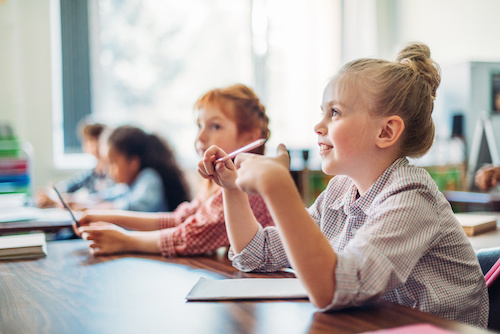Key points:
- Improving student learning is critical–here are some recent learning trends
- See article: 65 predictions about edtech trends in 2024
- See article: Innovative ideas for school libraries
- For more news on student learning, visit eSN’s Innovative Teaching page
It goes without saying that improving student learning and helping students achieve their learning goals have always been priorities for classroom teachers and educators.
Today, pandemic-related learning loss is still a very real concern for educators, and student learning is one of education’s biggest priorities as the nation strives to move further away from the pandemic’s impact on education.
Let’s take a look at some important resources to help classroom strategies support student learning goals:
Why is it important to involve students in learning?
Learner-centered education collaborates with learners to design learning experiences and pathways tailored to their interests and needs. Learner-centered education and its teaching methods can play a critical role in reshaping education systems, offering a more holistic approach to meeting learners’ needs and helping students find fulfillment in their academic accomplishments. K-12 Value Networks: The Hidden Forces That Help or Hinder Learner-Centered Education, a report from the Clayton Christensen Institute, offers insight into understanding why schools struggle to change their instructional models, along with 5 models that prioritize learner-centered education.
What is the most effective method of teaching?
Can learning centers that put student motivation at the heart of learning reliably lead children to successful careers and life opportunities regardless of their family background and home circumstances? Probably not. But these centers don’t purport to be one-size-fits-all models of education. Their aim is to provide learning experiences that can and do work exceptionally well for many kids but aren’t available in most schools. Rather than viewing models like these with skepticism until they prove that they can guarantee post-secondary success for all learners, maybe it’s time to expand our concept of education. Education doesn’t have to mean students do all of their important learning in classrooms. Education could be an ecosystem of interwoven teaching practices and experiences that occur in various settings and contexts. It’s worth exploring how student motivation can reframe education.
How do you ensure student learning in your classroom?
Student engagement is critical in ensuring–and boosting–student achievement. At its heart, student engagement is about tapping into students’ innate curiosity, creativity, and critical thinking skills. A lesson with student engagement at its core can make for the best learning experience as a student. Every teacher hopes to ignite, empower, and engage the students who walk through their classroom door. Ample research has shown that student engagement is crucial to overall learning and long-term success. Still, implementing this is easier said than done. To better ignite student curiosity and interest, teachers should consider trying one of these five strategies that help make student engagement second nature.
What does student learning look like?
In education, a big challenge is how to teach students what do to do when they don’t know what to do. What systems are needed for productive struggle to take place in classrooms and schools? How do students learn to struggle so they can eventually problem solve for themselves? Research in neuroscience tells us our brains grow new neuro-pathways when we are at the edge of challenge. It’s often called “The Goldilocks Principle” of learning – it can’t be too easy or too hard, learning activities and strategies must be just right. The term “productive struggle” is used a lot in education, but what does that really mean for teaching and learning? Educators can explore key ways to help build positive relationships while supporting productive struggle in classrooms and across schools.
What are positive learning experiences?
Learning should be positive for students, and often, students equate a positive experience with having fun. Here’s where purposeful play comes in. Many teachers feel they can’t easily incorporate purposeful play into the classroom–but doing so is surprisingly easy. A new survey of K-8 teachers and students from LEGO Education found that nearly all (98 percent) of students say purposeful play helps them learn and the majority (96 percent) of teachers believe it’s more effective than traditional methods like lectures or textbooks. Fun activities for students in the classroom are important. On top of that, almost 80 percent of students want more playful learning experiences in the classroom. Learn more about purposeful play’s rightful place in the classroom–and how to incorporate it into your own teaching.
- Friday 5: Virtual field trips - April 26, 2024
- Google, MIT RAISE launch no-cost AI training course for teachers - April 26, 2024
- 4 ways to support work-based learning - April 23, 2024

